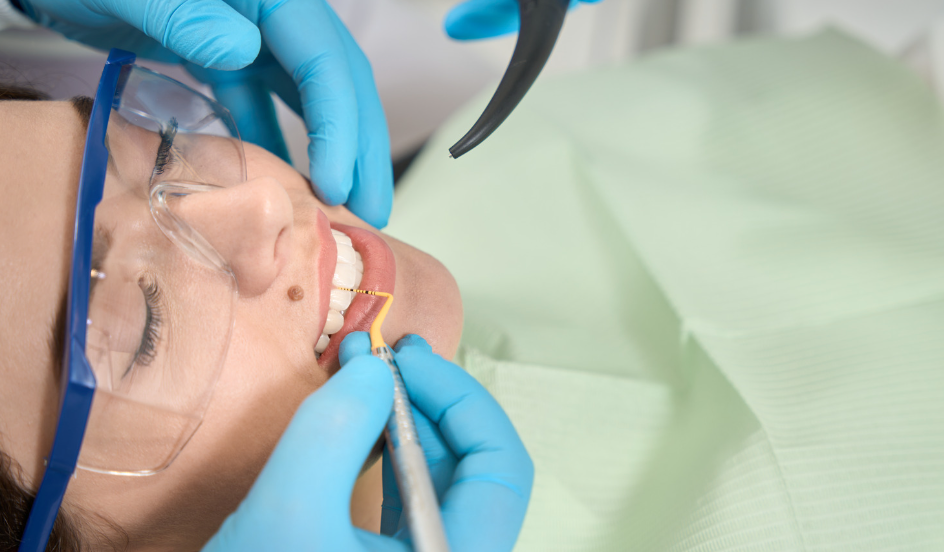
The Impact of Interproximal Reduction in Aligning Crowded Teeth
Interproximal reduction (IPR) is a key technique in modern orthodontics that involves the controlled removal of small amounts of enamel from the sides of teeth to create space. This technique plays a vital role in aligning crowded teeth, helping orthodontists achieve better results with minimal discomfort and fewer complications.
In this article, we’ll dive into what interproximal reduction is, how it works, and its significant role in correcting crowded teeth. We will also discuss its benefits, potential risks, and the reasons why it’s increasingly popular in orthodontic treatment.
What is Interproximal Reduction (IPR)?
Interproximal reduction (IPR) is a procedure in which a dentist or orthodontist removes tiny amounts of enamel from between teeth. This enamel reduction is done in such a way that the structural integrity of the teeth is maintained while creating space for alignment. It is often used as a part of orthodontic treatments to alleviate crowding, particularly in mild to moderate cases.
IPR is commonly performed during braces or clear aligner treatments to help teeth move into better positions, reducing the need for more invasive procedures like tooth extraction.
How Does Interproximal Reduction Work?
IPR works by gently reshaping the teeth to create small amounts of space between them. The process typically involves using specialized dental tools to carefully file down the enamel, focusing on the areas between the teeth where crowding is most severe. This enables the orthodontist to align the teeth properly without requiring the extraction of healthy teeth.
Step-by-Step Process:
Consultation and Planning: The orthodontist evaluates your teeth and creates a treatment plan. Digital imaging and X-rays may be used to assess the extent of the crowding and identify areas where IPR can be beneficial.
Enamel Reduction: Using specialized instruments, the orthodontist removes small amounts of enamel between the crowded teeth. Typically, 0.2 to 0.5 millimeters of enamel per tooth is removed, depending on the severity of the crowding.
Smoothing and Polishing: After the enamel reduction, the teeth are smoothed and polished to ensure there are no rough edges that could cause discomfort or plaque buildup.
Orthodontic Treatment: Once the space is created, the orthodontist continues with the primary treatment, such as braces or clear aligners, to align the teeth into their final positions.
Benefits of Interproximal Reduction
IPR offers several advantages when it comes to correcting crowded teeth:
1. Reduces the Need for Tooth Extraction
IPR is often an alternative to extracting healthy teeth to create space for alignment. By carefully removing small amounts of enamel, orthodontists can effectively align the teeth without resorting to extraction, preserving your natural teeth.
2. Improves Aesthetic Outcomes
By creating enough space for proper alignment, IPR contributes to better bite aesthetics and smile symmetry. Teeth can be straightened with minimal changes to the natural tooth structure, enhancing overall facial appearance.
3. Shortens Treatment Time
Since IPR allows for better space management between crowded teeth, orthodontic treatment can often be completed more quickly. This is particularly beneficial in cases where there are moderate space requirements, as it reduces the need for long-term adjustments.
4. Minimally Invasive
Unlike traditional tooth extraction, IPR is a non-invasive procedure with a quick recovery time. Most patients experience little to no pain during the process, and it is often performed without the need for anesthesia.
5. Enhances Comfort
By making small adjustments in the spacing between the teeth, IPR can reduce discomfort during the alignment process. Crowded teeth often cause friction and make it difficult for braces or aligners to fit comfortably, but IPR can alleviate this issue.
Potential Risks and Considerations
While IPR is generally considered safe, there are some potential risks and considerations to keep in mind:
1. Tooth Sensitivity
After the enamel is removed, some patients may experience temporary sensitivity to hot or cold temperatures. This is typically a short-term issue that resolves once the teeth adapt to the new shape and the orthodontic treatment progresses.
2. Tooth Structure Alteration
Although IPR removes only a small amount of enamel, some patients may be concerned about the permanent changes to their tooth structure. However, the amount of enamel removed is minimal, and the overall integrity of the tooth is not compromised when performed correctly.
3. Not Suitable for Severe Crowding
For cases of extreme tooth crowding, IPR may not provide enough space to achieve the desired alignment, and tooth extraction may be necessary.
When Is IPR Used in Orthodontics?
Interproximal reduction is typically used in various orthodontic scenarios, including:
Crowded Teeth: IPR is often used to resolve moderate to mild crowding by creating space for teeth to align properly.
Minor Tooth Shifting: For minor spacing issues that do not require major tooth movement, IPR can be an efficient way to correct alignment.
Clear Aligners: When using clear aligners (e.g., Invisalign), IPR can help the aligners fit better and move the teeth more effectively.
Braces Adjustments: IPR is also used in conjunction with traditional braces to create space and enhance treatment efficiency.
The Future of IPR and Tooth Reshaping
With advancements in orthodontic technology, interproximal reduction is likely to become even more refined, offering patients faster, more comfortable, and highly effective treatment options. Additionally, digital tools and 3D scanning are making it easier to determine exactly where enamel reduction should take place, further enhancing the precision and success of this technique.
Interproximal reduction is a valuable tool in modern orthodontics for aligning crowded teeth. By gently reshaping teeth and creating space, this technique helps orthodontists straighten teeth without the need for extractions or invasive procedures. While IPR offers several benefits, including reduced treatment time and improved aesthetics, it’s important for patients to work closely with their orthodontists to ensure it is the right solution for their specific needs.
By embracing IPR, patients can achieve better smile alignment with minimal disruption to their natural tooth structure, enhancing both the functional and cosmetic outcomes of their orthodontic treatment.
